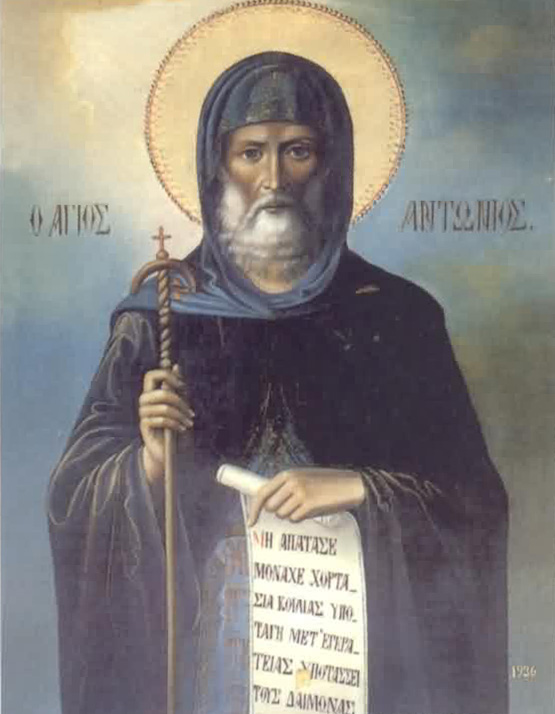
Then one day he emerged from the fort with the help of villagers, who broke down the door. By this time most had expected him to have wasted away or to have gone insane in his solitary confinement. Instead, he emerged healthy, serene, and enlightened. Everyone was amazed that he had been through these trials and emerged spiritually rejuvenated. He was hailed as a hero and from this time forth the legend of Anthony began to spread and grow. Anthony went to Fayyum and confirmed the brethren there in the Christian faith before returning to his fort.
Amid the Diocletian Persecutions, Anthony wished to become a martyr and in 311 went to Alexandria. He visited those who were imprisoned for the sake of Christ and comforted them. When the Governor saw that he was confessing his Christianity publicly, not caring what might happen to him, he ordered him not to show up in the city. However, the Saint did not heed his threats. He faced him and argued with him in order that he might arouse his anger so that he might be tortured and martyred, but it did not happen.
At the end of the persecutions, Anthony returned to his old Roman fort. By this time, many more had heard of his sanctity and he had many more visitors than before. He saw these visits as interfering with his worship and went further into the Eastern Desert. He traveled for three days before reaching a small oasis with a spring and some palm trees and chose to settle there. Disciples soon found him out and his number of visitors again continued to grow.
The backstory of one of the surviving epistles, directed to Constantine I, recounts how the fame of Saint Anthony spread abroad and reached Emperor Constantine. The Emperor wrote to him offering praise and requesting prayers. The brethren were pleased with the Emperor’s letter, but Anthony did not pay any attention to it, and he said to them, “The books of God, the King of Kings and the Lord of Lords, commands us every day, but we do not heed what they tell us, and we turn our backs on them.” Under the persistence of the brethren who told him “Emperor Constantine loves the church”, he accepted to write him a letter blessing him, and praying for the peace and safety of the empire and the church.
In 338, he left the desert temporarily to visit Alexandria to help refute the teachings of Arius. Although not particularly learned, Anthony was able to confound the Arians.
When Saint Anthony felt that the day of his departure had approached, he commanded his disciples to give his staff to Saint Macarius, and to give one sheepskin cloak to Saint Athanasius and the other sheepskin cloak to Saint Serapion, his disciple. He further instructed his disciples to bury his body in an unmarked, secret grave.
He probably spoke only his native language, Coptic, but his sayings were spread in a Greek translation. He himself left no writings. His biography was written by Saint Athanasius and titled Life of Saint Anthony the Great. Many stories are also told about him in various collections of sayings of the Desert Fathers.
Though Anthony himself did not organize or create a monastery, a community grew around him based on his example of living an asceticand isolated life. Athanasius’ biography helped propagate Anthony’s ideals. Athanasius writes, “For monks, the life of Anthony is a sufficient example of asceticism.”
